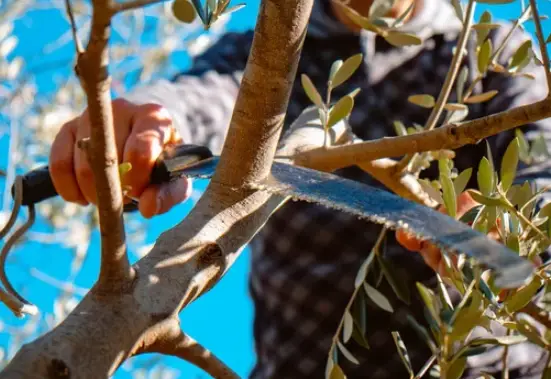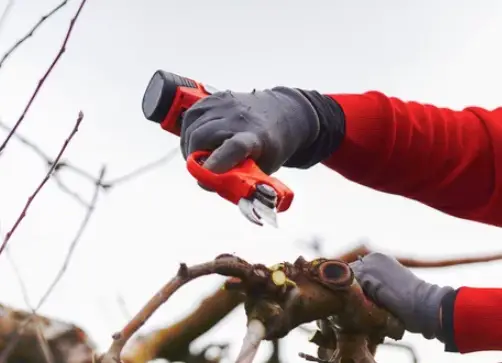Trees are essential to our ecosystem, and they provide us with countless benefits, including cleaner air, shade, and a natural habitat for wildlife. However, when it comes to maintaining trees in our yards or public spaces, there may be times when we need to trim or cut back branches. But can cutting branches actually kill a tree? Let’s dive in and find out!
First, it’s important to understand that trees are living organisms, and like all living things, they have a certain level of resilience. In general, pruning or cutting back branches will not kill a healthy tree. In fact, regular pruning can help trees grow stronger and healthier, as it promotes new growth and helps remove dead or diseased branches.
Can Cutting Branches Kill Trees?

can cutting branches kill the tree
There are some circumstances where cutting branches can be harmful or even fatal to a tree. For example, if a tree is already weakened due to disease or environmental stressors, cutting back too much of its canopy can further stress the tree and lead to its decline or death. Additionally, improper pruning techniques or using dull tools can cause damage to the tree’s bark or branches, leaving it vulnerable to pests and diseases.
Time of Cutting and Pruning
Another factor to consider is the timing of pruning. Trees have a natural cycle of growth and dormancy, and pruning during the wrong time of year can interfere with this cycle and harm the tree. In general, it’s best to prune trees in late winter or early spring, before new growth begins.
So, can cutting branches kill a tree?
The answer is that it depends on several factors, including the health of the tree, the extent of pruning, and the timing of the pruning. However, with proper care and attention, pruning can actually be beneficial for trees and help them thrive.
If you’re unsure about how to prune your trees or are concerned about their health, it’s always best to consult a professional arborist. They can assess your trees and provide recommendations for pruning and other care techniques to ensure their long-term health and vitality.
The Benefits of Pruning: Why It’s Important to Keep Your Trees Trimmed

Now that we know that cutting branches won’t necessarily kill a tree, let’s explore why pruning is important and the benefits it can provide.
- Promotes Healthy Growth: Pruning helps to remove dead, diseased, or damaged branches, which can inhibit healthy growth and spread of disease to other parts of the tree. It also encourages new growth and can improve the overall shape and structure of the tree.
- Increases Safety: Overgrown branches can pose a safety hazard, especially during severe weather conditions. Pruning helps to remove any weak or heavy branches that could potentially fall and cause damage or injury.
- Enhances Aesthetics: A well-pruned tree can enhance the overall appearance of your property. By removing any unsightly or misshapen branches, your tree can look neat, tidy, and visually appealing.
- Increases Fruit Production: If you have fruit trees, pruning can help to increase fruit production. By removing excess branches and promoting new growth, you can encourage your tree to produce more fruit and improve the quality of the fruit.
- Saves Money: Proper pruning can actually save you money in the long run. By removing dead or diseased branches before they become a bigger problem, you can avoid costly tree removal or repair expenses down the road.
Tips for Proper Pruning: How to Keep Your Trees Healthy and Happy

Now that we’ve explored the benefits of pruning, let’s dive into some tips for proper pruning to ensure your trees remain healthy and happy.
- Use the Right Tools: Make sure you have the right tools for the job, including sharp, clean pruning shears, loppers, and a pruning saw. Using dull or dirty tools can damage the tree and increase the risk of infection.
- Follow Proper Techniques: When pruning, make sure to use proper techniques, such as making clean cuts at a slight angle and avoiding cutting too close to the trunk or leaving stubs. Improper cuts can lead to damage or disease.
- Consider the Timing: As mentioned earlier, timing is important when pruning trees. In general, it’s best to prune trees in late winter or early spring, before new growth begins.
- Know Your Tree: It’s important to understand the specific needs and growth habits of your tree when pruning. Some trees, such as flowering trees, require different pruning techniques than others, so make sure to do your research or consult a professional.
- Don’t Overdo It: While pruning can be beneficial, it’s important not to overdo it. Removing too many branches can stress the tree and inhibit healthy growth. Stick to removing dead, diseased, or damaged branches, and avoid pruning more than 25% of the tree’s canopy.
When to Call a Professional: Signs Your Tree Needs Expert Care
While pruning can be a great way to keep your trees healthy and happy, there are times when it’s best to call in a professional arborist. Here are some signs that your tree may need expert care:
- Structural Issues: If you notice large branches that are splitting or cracking, or if the trunk of the tree is showing signs of damage or decay, it’s best to call in a professional. These structural issues can be dangerous and require expert attention.
- Disease or Pests: If your tree is showing signs of disease or pest infestation, such as yellowing leaves, spots, or holes in the bark, it’s important to call in an arborist to assess the problem and provide the appropriate treatment.
- Large Trees: If you have large trees that require pruning or removal, it’s best to call in a professional. Climbing and working on large trees can be dangerous and requires specialized training and equipment.
- Proximity to Buildings or Power Lines: If your tree is located near buildings or power lines, it’s important to call in an arborist to safely prune or remove the tree. This requires specialized equipment and expertise to avoid damage or injury.
Conclusion
While cutting branches may not kill a tree, it’s important to understand the benefits of pruning and the proper techniques to use. Regular pruning can promote healthy growth, increase safety, enhance aesthetics, increase fruit production, and save you money. So, don’t be afraid to give your trees a trim – they’ll thank you for it!




